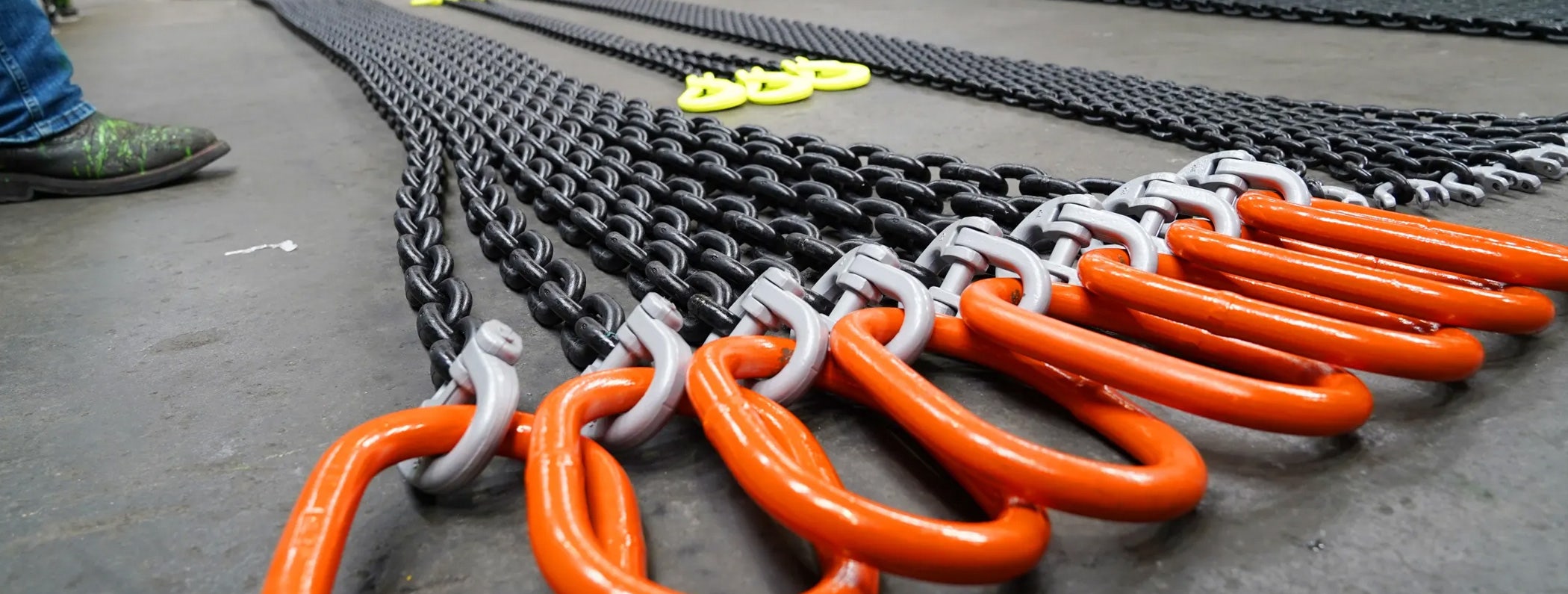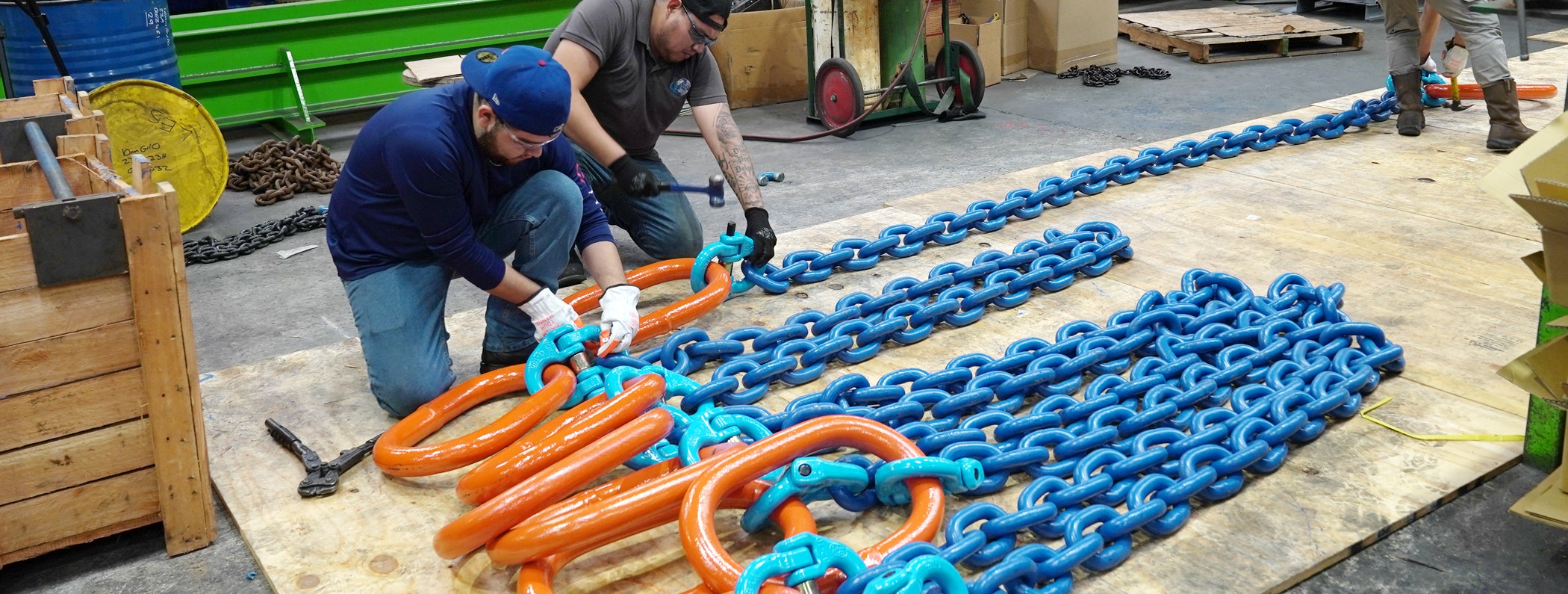7 Important Factors You Must Consider When Choosing Chain Slings for Your Project
There is a reason why industrial lifting slings are popular for lifting heavy loads in industries like construction, oil and gas, steel mills, and automobile. Don’t let their simple design fool you. They offer unparallel safety, flexibility, and longevity. From giant windmills to containers, chain slings can be used to lift just about anything.
However, you will need to choose the right type of industrial chain slings to ensure safety and efficiency. Before we get into what you should consider when selecting alloy chains, let’s see what type of slings you can use.
Types of Industrial Chain Slings
Unlike synthetic slings, chain slings are made from high-quality metal alloys, usually steel. They can withstand extreme temperatures, impact, chemicals, and UV light. Thanks to their durability and flexibility, you can use industrial lifting slings in manufacturing, foundries, oil and gas extraction, steel mills, and other severe work environments.
There are three common types of slings, based on the number of alloy chain legs.
1. Single-Leg Alloy Chain slings
As the name suggests, single-leg alloy chain slings consist of only one chain supporting the load. That’s why these chains are more suitable for lifting evenly distributed loads. They are commonly used in foundries and manufacturing plants.
2. Double-Leg Alloy Chain slings
Double-leg alloy chain slings come with two strands of chains. The two separate links provide better support to the attached load. Some sling manufacturers also offer adjustable double-leg slings. They render more flexibility when lifting heavy loads.
3. Multi-Leg Alloy Chain slings
Multi-leg alloy chain slings have three or four links. They are the strongest of alloy chains, having the capacity to lift extremely heavy loads. You can find them in all types of heavy industries.
Important Factors To Consider When Choosing Chain slings
The flexibility and durability allow you to use chain slings for vertical, choker, or basket hitches. You can use different variations of master links, slings, and hooks, to build lifting and rigging assemblies as required.
But, as strong as they come, these slings do have limitations. Moreover, lifting heavy loads is a dangerous task that can lead to serious injuries should things go south. So, you have to be very careful when selecting a chain sling.
Here’s what you mustn’t forget.
1. Know What You Are Lifting or Rigging
First, you need to understand what the intended load is and how you want to lift it. It’ll help you plan the entire lifting and rigging operation to a tee. So, start digging into the shape, size, strength, and weight of the load. The more details you can get, the better.
2. Understand Where the Center of Gravity of the Load Is
The center of gravity of the load is a crucial factor. If you know the center of gravity, arranging the slings and other lifting devices becomes a lot easier.
As a cardinal rule, the master link or the hook (connected to the crane or hoist) should be directly over the center of gravity. Otherwise, the load will be out of balance, resulting in accidents and/or injuries. Most likely, you will have to adjust the load repeatedly until you can find its center of gravity.
3. Check the Lifting Points
In addition to the center of gravity, you need to know how to attach the load to the lifting devices. Most heavy loads, such as containers, come with lifting points.
But, when lifting points are absent, you have to consider where you can attach the slings. Firstly, the lifting points you select must be strong enough to bear the weight of the load.
Secondly, if the load is delicate, choosing synthetic slings that you can wrap around it is a good idea. It’s the best way to protect the load from excruciating pressure alloy chains would put on it during the lift.
Make sure to choose suitable slings depending on your load, lifting environment, and the type of chains you are using.
4. Make Sure to Select the Right Grade
Selecting the right grade is equally important. Carbon steel chains have lower grades (usually 30, 40, and 70), which are not suited for overhead lifting and rigging. But, you can use them for tying down and bundling loads.
However, steel alloy chains have higher grades, most common being 80, 100, 120. Both OSHA and ASME recommend these grades for overhead lifting applications.
Moreover, selecting the right grade can increase your lifting efficiency and reduce the risk of accidents. While you can use a thicker Grade 80 chain, a Grade 100 but thinner chain will be easy to use. In other words, you need to get a grip on alloy chain grades.
5. Consider the Temperature
You can use alloy chain slings for lifting loads at high temperatures. They can withstand temperatures up to 1000° Fahrenheit. However, continuously exposing these chains to high temperatures (more than 400° Fahrenheit) will affect their strength.
Sling manufacturers often recommend decreasing the working load limits in such conditions. Make sure to check the user manual for manufacturer’s instructions in this regard.
6. Find Out the Working Load Limit of Chain Slings
You will need to check the working load limit (WLL) of each chain sling. You must never exceed the recommended WLL. Different factors will affect the WLL of a chain sling. These include but are not limited to:
- The weight and the size of the load. Usually, heavy loads need chains with higher WLL.
- The size of the chain will also affect the WLL. Make sure to check the manufacturer’s recommendations before use.
- The angle of lift affects the WLL as well. The working load limit of the same chain would be considerably less for a straight lift (90° angle) compared to a 60° angle lift.
- Temperature affects the WLL as it goes up. Usually, above 500° Fahrenheit, every 100° Fahrenheit rise in temperature corresponds to a 10% decrease in WLL. However, you need to check the manufacturer’s manual to be sure.
7. Inspect The Alloy Chains
Lastly, you must inspect each alloy chain daily or before using it. Usually, a visual inspection is enough to know whether the chain is safe to use. Assign a qualified person for the same.
During the daily inspection, look for:
- Excessive wear and tear.
- Cracks or nicks in the weld area.
- Gouged and stretched links.
- Bents or cuts.
- Any other kind of physical or chemical damage.
- Make sure to check the master and coupling links and hooks for wear and tear.
Furthermore, check the identification tag, which bears the serial number, manufacturer’s details, size, grade, and working load limit. It should be legible. If the tag is missing or illegible, either replace it or stop using the chain slings.
In addition to the regular inspection, you also need to perform documented periodic chain sling inspections by an expert. Depending on the frequency of use and work environment, you can check the chains:
- Monthly or quarterly for severe use.
- Annually for normal use.
- And as recommended by experts for special use/work conditions.
In Conclusion
Alloy chains are an integral part of lifting heavy loads. However, as your safety and efficiency are at stake, you will have to consider a few things before using them. With these tips, you will be able to choose the right chains for your project.
If you are looking for industrial lifting devices, HHI can help. We offer a wide range of rigging and lifting hardware for clients across industries. Feel free to reach out to us or check out our online store today!
Shop Online Chain Slings











